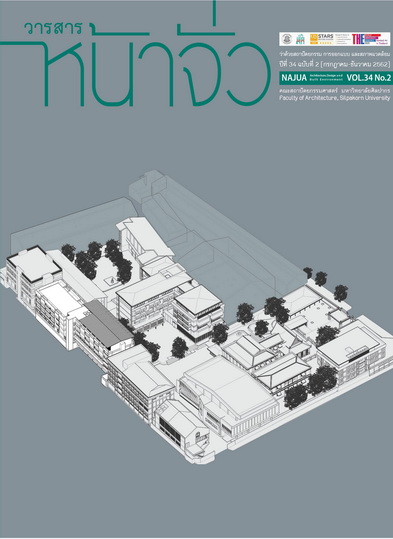The Seven-Centuries History of a Tai Aristocratic Family of Dali, Yunnan Province: An Analysis Based on Epigraphic and Documentary Records of the “Ah” Family”
Keywords:
the “Ah” family of Dali, Tai in Yunnan, Yunnan historyAbstract
Samerchai Poolsuwan
Faculty of Sociology and Anthropology, Thammasat University
The article presents a set of primary records to reveal the history of the aristocratic “Ah” family of Deng-chuan, a township in the Dali principality of Yunnan China. Being designated by the imperial court, the family hereditarily ruled the township from 1382 CE, in the first reign of the Ming dynasty, until coming to the end of the system in 1728 CE, during the Yung-cheng reign of the Qing dynasty. The records include two long lithic inscriptions of the family history (dated 1508 and 1577 CE), a number of tomb inscriptions, and a record of the family genealogy, woodblock printed in 1843 CE — during the Tao-kuang reign of the Qing dynasty. An analysis of these records reveals the origin of the “Ah” family to be ethnically “Pai-ae” (Tai), closely linked by blood with the Tai ruling class of the Salween Valley. It was for centuries, from the late Yuan to early Qing, that the “Ah” rulers of Dengchuan had actively engaged in the political changes of Yunnan. Although being heavily absorbed into the Chinese cultural domain, the family had still maintained its “Tai” ethnic consciousness, truly in a politically dependent manner, as reflected by its maintenance of marriage relationship with the ruling classes of various Tai groups in the Mae-khong and Red River valleys.
References
- Ah Wei Aai, (2000). Banthưk banpaprawat trakūn ʻā chabap chamra dōi lūk lān run thı̄ yı̄sip. [in Thai] (Ancestral Record of the Ah Family, compiled by members of the 20th generation). Dali, Yunan Province: The Ah Family of Chew-chou. 2000. (Chinese Language).
- Dodd, W. C., (1923). The Tai Race, Elder Brother of the Chinese. Iowa: Torch Press.
- Fan Shua, (1969). Mansu: A Complementary account of the Royal Chinese Chronicle dealing with minorities in the southern part of Imperial China prior to the Sukhothai period. (translated from the royal edition published at the U-Jing-Dian Mansion, Peking) Bangkok: Department of Fine Arts.
- H. R. Davies, (1909). Yun-Nan The Link Between India and the Yangtze. Cambridge: Cambridge University Press.
- Gogoi P. , The Tai and The Tai Kingdom (Calcutta: Sreekana Press, 1999), 58–111.
- Jiang Ing Liang, (1991). Prawat chon chư̄ achāt thai, Ton tee song, (in Thai) [History of Tai ethnic group, Vol. II] Bangkok: Prime Minister’s Office.
- Jiranakorn Y. and Settakul, R., (2001). Prawattisāt sip sō̜ng pan nā (in Thai) [History of Sipsonpanna]. Bangkok: TRF.
- Jiranakorn Y., and Poolsuwan S., (2019). Poē t kru ʻēkkasān Čhı̄n bōrān : tı̄phǣ khō̜mūn kān pokkhrō̜ng chon chāi khō̜p læ čhaothin chāo tai khō̜ng phǣndin Čhı̄n. (in Thai) [Insights into Old Chinese Records: Revealing the Chinese Imperial Administration Imposed on Peripheral Minorities and Tai Rulers]. BKK: the Princess Maha Chakri Sirindhorn Anthropology Centre.
- Kullavanijaya P. (2004).“Khwām samphan thāng chư̄asāi rawāng phāsā thin trakūn thai sākhā tawantok chı̄ang tai: sathāna læ khwāmrū nai patčhuban, (in Thai) [Genetic relationship amongthe Southwestern-Tai dialects: its current status]”. in The International Conference in Honor of HRH Princess Galyani Vadhana Krom Luang Naradhiwas Rajanagarindra titled “Research Progress on the “Tai” Ethnic Peoples of the People’s Republic of China”. November 5-6, 2004. By Thai Kadi Research Institute and the Princess Maha Chakri Sirindhorn Anthropology Centre. Bangkok.
- Pitipat S. and Poolsuwan S., (2003). Khon tai nai sư̄ mao monthon yūnnān sāthāranarat prachāchončhı̄n : prawattisāt kānmư̄ ang sangkhom læ watthanatham. (in Thai) [The Tai People of Simao, Yunnan Province, The People Republic of China: Historical, Political and Cultural Perspectives]. BKK: Thai Khadi Research Institute.
- Pitipat S. and Poolsuwan S. (2000). “Tai” lae “Zhuang” nai monthon yūnnān sāthāranarat prachāchončhı̄n : bot wikhro̜ čhāk khō̜mūn phāksanām. (In Thai) [Tai and Zhuang in Yunnan Province, The People Republic of China: A Fieldwork Based Analysis]. Bangkok: Thai Khadi Research Institute.
- Poolsuwan S., (2000). “Khon thai nai lum mǣnam yǣng sı̄ kı̄ang tō̜n bon, (in Thai) [The Tai People of the Upper Yangtze Valley]”, in Thamsart Journal, 26 (3) (2000): 8-41.
- Poolsuwan S., (2006). “Sư̄p prawat kān phrǣkračhāi khō̜ng phāsā læ watthanatham tai sū Asia ākhanē”, (in Thai) [tracing the diffusion history of the Tai dialects and culture into Southeast Asia] in Thai Studies Journal, 3(2) (2006): 1-80.
- Poolsuwan S., (2018). Rat chān (mư̄ ang tai): phonlawat chāttiphan nai bō̜ribot prawattisāt læ sangkhom kānmư̄ ang rūamsamai. (in Thai) [Shan State (Muang Tai): Ethnic Dynamism in the Historical and Socio-political Perspectives”] 2nd editions. Bangkok: the Princess Maha Chakri Sirindhorn Anthropology Centre.
- Wittayasakpan S., (2001). Prawattisāt thai yai. (in Thai) [History of Tai Yai]. Bangkok: TRF.





